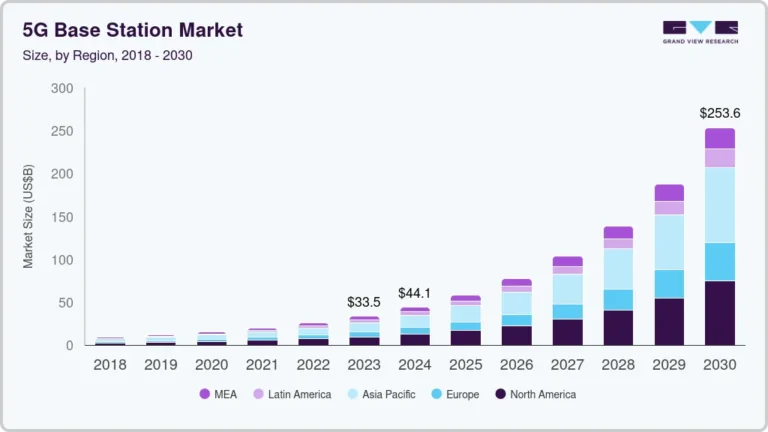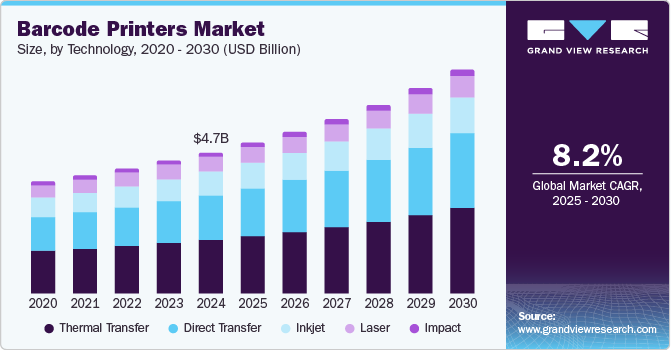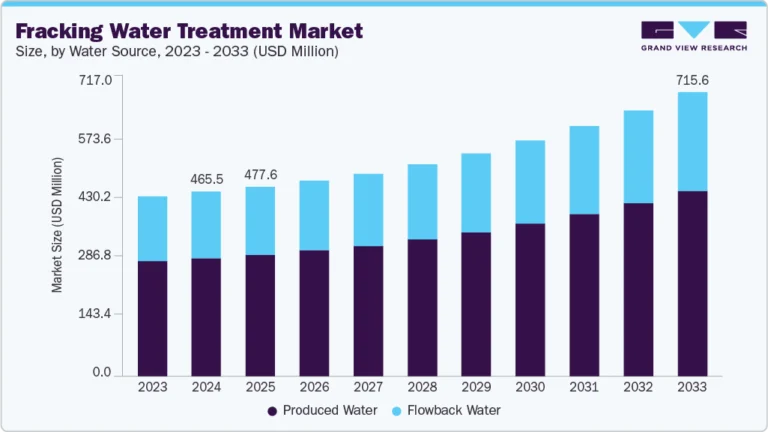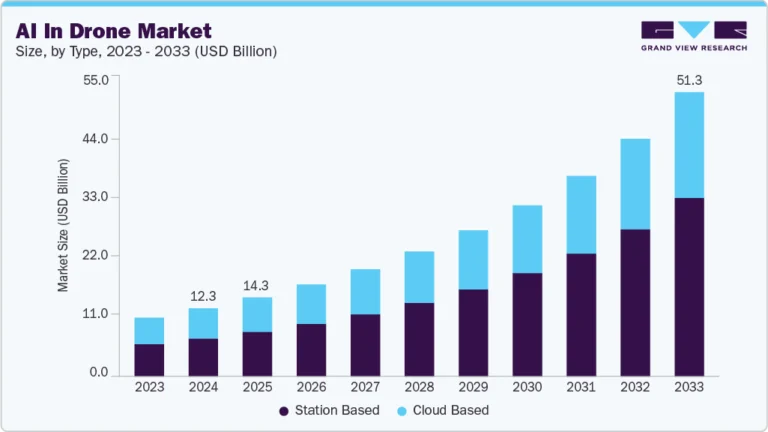Infrared Sensor Market Size, Share & Trends Analysis growing at a CAGR of 12.2% from 2024 to 2030

The global infrared sensor market size was estimated at USD 711.4 million in 2023 and is projected to reach USD 1,516.4 million by 2030, growing at a CAGR of 12.2% from 2024 to 2030. An infrared sensor is a device that detects infrared radiation emitted or reflected by objects.
Key Market Trends & Insights
- In terms of region, North America was the largest revenue generating market in 2023.
- In terms of segment, near infrared (nir) accounted for a revenue of USD 711.4 million in 2023.
- Near Infrared (NIR) is the most lucrative type segment, registering the fastest growth during the forecast period.
Market Size & Forecast
- 2023 Market Size: USD 711.4 Million
- 2030 Projected Market Size: USD 1,516.4 Million
- CAGR (2024-2030): 12.2%
- North America: Largest market in 2023
Request a free sample copy or view report summary: https://www.grandviewresearch.com/industry-analysis/infrared-sensor-market-report/request/rs1
It is used in various applications such as temperature measurement, proximity sensing, night vision, and remote controls, leveraging the heat signatures emitted by objects to provide data or enable control functions. The market growth is driven by factors such as the increasing demand for consumer electronics, growth in the automotive industry, and rising adoption in healthcare applications.
Infrared sensors are witnessing rising demand within the consumer electronics sector, driven by the proliferation of smart devices and technological advancements. These sensors are fundamental to tablets, smartphones, and smart home devices, enabling features such as proximity sensing, gesture recognition, and ambient light adjustment. The demand is further fueled by the growing adoption of augmented reality (AR) and virtual reality (VR) applications, where infrared sensors contribute to enhanced user interactions and immersive experiences. Additionally, infrared sensors play a crucial role in energy-efficient device design by optimizing power consumption based on user proximity and environmental conditions. As consumer preferences shift towards interconnected and intelligent devices, the integration of infrared sensors is becoming ubiquitous across various consumer electronics categories.
The automotive industry is a key driver for the market growth, primarily due to the advancements in vehicle safety and automation technologies. Infrared sensors are essential components in advanced driver assistance systems (ADAS), enabling functionalities such as night vision, pedestrian detection, and adaptive cruise control. These sensors enhance driver visibility in low-light conditions and improve vehicle safety by detecting obstacles and potential collisions. Moreover, infrared sensors are utilized for occupant monitoring systems, ensuring passenger safety and comfort. With the increasing adoption of electric vehicles (EVs) and autonomous driving technologies, the demand for infrared sensors is expected to surge as automakers prioritize safety features and regulatory compliance.
Furthermore, infrared sensors are gaining traction in healthcare applications due to their non-invasive nature and ability to provide accurate and real-time health data. These sensors are widely used for non-contact temperature measurement, vital sign monitoring, and medical imaging, facilitating remote patient monitoring and telehealth services. Infrared sensors play a crucial role in fever screening systems, enabling early detection of infectious diseases and ensuring public health safety in high-traffic areas such as airports and healthcare facilities.
Additionally, infrared thermal imaging aids medical professionals in diagnosing conditions like inflammation, circulatory problems, and musculoskeletal disorders. The integration of infrared sensor technology into wearable health devices is revolutionizing personalized healthcare solutions, supporting preventive care and chronic disease management. As the healthcare industry continues to prioritize efficiency, accuracy, and patient-centric care, the demand for infrared sensors is poised to grow, driving innovation in medical diagnostics and monitoring technologies.
Type Insights
The Near Infrared (NIR) segment held the largest share of 41.6% in 2023, due to its widespread applications in sectors such as telecommunications, medical diagnostics, and environmental monitoring. NIR sensors are widely used in the healthcare sector for non-invasive medical imaging techniques, such as pulse oximetry and spectroscopy. Their use in fiber optic communications and quality control processes in manufacturing has further strengthened their market dominance. The versatility and cost-effectiveness of NIR Working Mechanism have made it a preferred choice for various industrial and commercial applications, contributing to its substantial market share.
The Far Infrared (FIR) segment is expected to grow at the fastest CAGR of 13.6% during the forecast period, due to its superior capabilities in temperature measurement and thermal imaging, which are essential for a wide range of applications. FIR sensors are increasingly utilized in sectors such as healthcare, automotive, and consumer electronics for applications such as night vision, non-contact temperature sensing, and thermal cameras. The growing emphasis on safety and security, along with advancements in FIR technology making sensors more accurate and affordable, has driven their adoption. In addition, the rise in demand for Advanced Driver-Assistance Systems (ADAS) in vehicles has significantly contributed to the rapid growth of the FIR segment.






